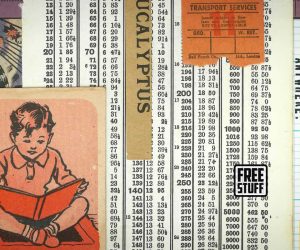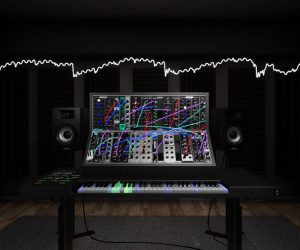
New Wave of Modular
Working regularly with synthesisers, you know the features you value (and wish for). So isn’t it about time you hand-picked some synthesiser modules and built your very own sound? Chris Steller shows you how.
Presets can be the perfect entry point to instant creativity, but can also bring swift death to your originality. Modular synthesis is the antidote for saved files, software and presets. It doesn’t even offer recall, so a patch you spent hours deliberating over could potentially be unrepeatable. It’s definitely not for the faint of heart, but neither is true originality.
Take a few left-field ideas, like putting a distortion effect in the middle of a traditional path; maybe splitting a waveform’s output to go through multiple filter or effect treatments to be combined again further along the signal path; or using the output of a wavetable to modulate a pitch, filter or volume, instead of your common garden-variety LFO. While these experiments are possible in the software realm, the best way to get to grips with these sonic departures is by choosing and combining your own synthesiser components, and entering the modular world.
BACK ON RACK
Modular synthesisers have been around for a long time, in quite a few different size and power formats, with a slow rise and fall in popularity every few decades. Traditionally the domain of larger educational institutions, modular synthesis has been hampered by issues of cost, size, and consequently, a relatively small following… until recently.
Modular’s most recent standard, the Eurorack format, was introduced with Doepfer, Analogue Systems, Analogue Solutions, and the now defunct Plan B. Doepfer and Analogue Systems offered more traditional modules, and Analogue Solutions specialised in analogue drum modules — reproducing individual components of the ‘TR’ drum machine. New arrivals followed from Livewire and Cwejman (try ‘Shwayman’ as an approximate pronunciation).
Now there’s a huge number of companies producing modules for the format, at least 100 brands, with companies spread from Portugal to Australia, selling everything from kits to completed modules. With a number of modular blogs and forums (like www.muffwiggler.com) now in full swing, many more designers are selling their PCBs directly to users, with user orders financing the production runs, and member collaborations providing improvements and updates, as well as designs for module front panels. There’s never been a better time to buy in.







AUSTRALIAN EURORACK IMPORTERS
Equinox Oz: www.equinoxoz.com
Rhythm Active: www.rhythmactive.com.au
Elby Designs: www.elby-designs.com
Awave: www.awave.com.au
NEW WAVE
Obviously, with so many manufacturers and experimenters in the market, it would be impossible to mention every module that’s available in this article, so I’ll focus on some interesting and innovative offerings.
One of the most significant changes in modern synthesiser module design, is the introduction of new sound generating and processing methods; the first notable entries were in the proliferation of distortion/bit crusher modules, many of which were converted from stomp boxes (4ms Pedals and Malekko Heavy Industry), or wavetables for signal generation and modulation (The Harvestman Model 1991 Piston Honda, WMD Geiger Counter, Synthesis Technology E350 Morphing Terrarium), digital oscillators, programmable DSP effects (TipTop Z-DSP), voltage-controlled WAV players (ADDAC Systems ADDAC101 and Mungo Enterprises’ w0 and g0), and of course, the advent of USB connectivity on a module for programming (Snazzy FX Ardcore).
Highly respected analogue synth designer, Ken MacBeth (search for Macbeth’s coveted M5n and M3x modules) has also joined the fold, offering high-end oscillators and filters, along with envelope generators and audio mixer, plus some very neat keyboard controllers to come.
Australia’s own Mungo Enterprises recently launched three modules, the most complex of these, the g0, described as a Granular/Microsound/Sampler/Delay/Pitch Shifter module. The g0 uses an SD card slot to access mono WAV files which can be manipulated down to individual sample level, including elastic manipulation of audio in real time, and control of the playback in length from grains up to rhythmic loop sampling.
More home grown product comes from Innerclock Systems, based on their industry standard Sync Gen range of desktop products — the Sync Gen II LS. Innerclock Systems’ synchronisation products have found themselves in systems belonging to some of the better known music technology artists around the planet.
Another left-field module idea, attempting to take advantage of the popular notion of using effects pedals with modular synths, is The Harvestman’s Model 1979 Stilton Adaptor — a four-channel effects insert module, which utilises TRS cables for the convenient insertion of pedals into the signal path.
This is more of a starting point for people who want to research modular synthesis and how to get involved. It can be as cost-effective or wage-consuming as you like, but fortunately, there are plenty of on-line resources to see and hear individual modules, and discuss them with other users. As I said earlier, there is so much available, and different plans for each person, so get cracking on your research, and enjoy the journey.
Chris Steller has worked as a composer, programmer, sound designer, product specialist, product manager, clinician and teacher. What he doesn’t know about synthesisers he is certainly willing to find out. Ask via Steller Sound Technology: [email protected]
















RESPONSES